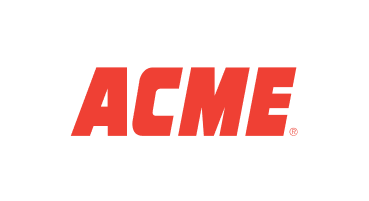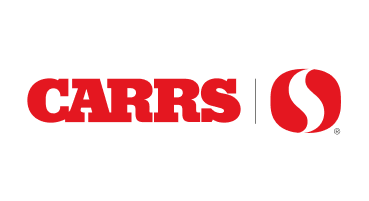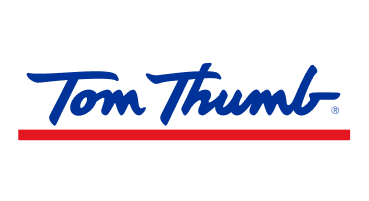When you’re always-on-the-go, it can be difficult to eat well-balanced meals. But making healthier food choices for you and your family doesn’t have to be stressful. Adding grain-based foods to any meal is an easy way to up its nutritional value.
Not all grains are the same. Read on to learn how to make the best grain choices that contribute to your overall health.
What are whole grains?
Whole grains are part of a nutritious diet. Examples include whole wheat, oats, quinoa, and brown rice. These grains have whole seeds called kernels that offer a full package of health benefits in just 3 layers:[1]
- Bran: This fiber-rich outer layer has B vitamins, fiber, and disease-fighting antioxidants.
- Endosperm: The middle layer has small amounts of vitamins, as well as some protein and carbohydrates.
- Germ: The inner part of the kernel has vitamins, minerals, protein, and healthy fats.
What’s the difference between whole grains, refined grains, and other grains?
It can be confusing to see different terms describing grains on food labels. Basically, grain products come in different forms. What sets each grain type apart is how they’re processed:[2]
- Whole grains have all 3 kernel layers.[3]
- Refined grains undergo a processing step that leaves only the middle layer (endosperm).[4] This process removes most of the grain’s fiber and nutrients. White flour and white rice are refined grains.
- Enriched grains are refined grains that have their nutrients added back in.[5] Examples include enriched white rice and enriched white bread.
- Fortified grains have added nutrients that aren’t naturally found in grains. For instance, some cereals and breads have added calcium. Food manufacturers may add nutrients to whole-, refined or enriched grain products.[6]
- Multigrain indicates that a product has more than 1 type of grain.[7] A product may be 100% whole grain, 100% refined grain, or a mix of whole and refined grains. You’ll see many multigrain bread and cracker products on store shelves.
- Whole wheat means a product is made from whole wheat grains.[8] Bread, pasta, and other products made with 100% whole wheat are whole-grain products.
Benefits of whole grains
As a nutrient-rich carbohydrate, whole grains give you energy to power through each day.[9] Whole grains are also:
High in health-supporting fiber
The fibrous outer layer (bran) of whole grains offers many health benefits:[10]
- Helps with weight management: Fiber keeps you feeling full longer, making it easier to skip between-meal snacks.[11] Studies show that consuming whole grains every day can help prevent unwanted weight gain.[12]
- Promotes healthy bowel movements: Fiber helps bulk up stools, making them softer and easier to pass.[13] You’re less likely to experience constipation. Studies also suggest that fiber from whole grains lowers your risk of colorectal cancer.[14]
- Protects your heart: A high-fiber diet that includes whole grains can lower total cholesterol and low-density lipoprotein (LDL). [15] LDL is the “bad cholesterol.” Too much LDL cholesterol in the blood may contribute to heart disease.[16] Eating more whole grains can also help lower blood pressure, another heart disease risk factor.[17]
Stabilizes blood glucose: Fiber slows the breakdown of starches (a type of carbohydrate) into blood glucose. Eating whole grains may lower your risk of Type 2 diabetes.[18]
Chock-full of nutrients
Whole grains have antioxidants and phytochemicals that help reduce the risk of chronic diseases.[19] You also benefit from these vitamins and minerals:
- B vitamins, including thiamin, riboflavin, and niacin, support your metabolism and nervous system.[20] Folate and folic acid (two types of vitamin B9) help prevent birth defects like spina bifida.[21]
- Iron helps red blood cells carry oxygen throughout your body.[22]
- Magnesium helps regulate your blood glucose and blood pressure. It also builds bones.[23]
- Phosphorus contributes to building strong bones and teeth.[24]
- Selenium helps support your immune system and protect against infections.[25]
- Zinc helps repair tissues and supports your immune system.[26]
How many whole grains should you have every day?
The USDA’s healthy eating tool, MyPlate, recommends filling a quarter of your plate with grains.[27] That’s about 6 servings of grains per day.[28] Whole grains should account for half of those grains (3 servings).[29]
Here’s what some common whole-grain servings look like:[30]
Product Number of Whole-Grain Servings
1 cup oatmeal 2
1 whole-wheat English muffin 2
1 cup cooked quinoa 2
½ cup brown rice 1
1 cup whole-grain cereal 1
3 cups popcorn 1
How do you know if a product has whole grains?
If you want to add more whole grains to your diet, the following steps can help ensure you’re getting a whole-grain product:[31]
- Read the ingredient list. The words “whole” or “whole grain” should appear first.
- Look for the Whole Grain Stamp from the Oldways Whole Grains Council.
- Check for the words “enriched” or “fortified,” which can indicate a product has refined grains. And look for an option with mostly whole grains instead.
Shopping for whole-grain products
Food manufacturers use whole grains to make a variety of products, including bread, pasta, tortillas, and cereals.
You can also stock up on these whole grains:
- Barley
- Brown rice and wild rice
- Bulgur
- Corn, cornmeal, and popcorn
- Farro
- Oatmeal and whole oats
- Quinoa
In summary: Choose whole grains for health benefits
Whole grains are an important part of a well-balanced diet. They’re a major source of fiber, vitamins, minerals, and antioxidants that support overall health. Adding more whole grains to your meals is a simple and delicious way to help lower your risk of health issues like diabetes and heart disease.
Now that you know the benefits of whole grains, you may be curious how to get more of them in your diet. The Sincerely Health nutrition tools in the grocery app can help you reach your whole grain goals.
You can start by downloading the grocery app. You’ll save $10 on groceries* for creating an account. Next, create a personalized Sincerely Health nutrition profile to receive 1,000 points.*
Your nutrition profile allows you to:
- Set specific nutrition goals.
- Earn 10 points for items you purchase for a maximum of 100 points per order (that’s 10 items at 10 points each).*
Sign up for Sincerely Health and create a nutrition profile to help you start eating more whole grains today!
Download your app on the App Store today












-
1
[1] Oldways Whole Grains Council. What’s a Whole Grain? A Refined Grain? https://wholegrainscouncil.org/whole-grains-101/whats-whole-grain-refined-grain
-
2
[2] Oldways Whole Grains Council. What’s a Whole Grain? A Refined Grain? https://wholegrainscouncil.org/whole-grains-101/whats-whole-grain-refined-grain
-
3
[3] Oldways Whole Grains Council. What Is a Whole Grain? https://wholegrainscouncil.org/what-whole-grain
-
4
[4] Oldways Whole Grains Council. What’s a Whole Grain? A Refined Grain? https://wholegrainscouncil.org/whole-grains-101/whats-whole-grain-refined-grain
-
5
[5] Oldways Whole Grains Council. What’s a Whole Grain? A Refined Grain? https://wholegrainscouncil.org/whole-grains-101/whats-whole-grain-refined-grain
-
6
[6] Asia Pacific Journal of Clinical Nutrition. Whole Grains, Refined Grains, and Fortified Grains: What’s the Difference? Last reviewed September 9, 2000. https://onlinelibrary.wiley.com/doi/10.1046/j.1440-6047.2000.00171.x
-
7
[7] Gold Medal Bakery. Multigrain vs. Whole-Grain Bread vs. Whole Wheat. Last reviewed June 25, 2020. https://www.goldmedalbakery.com/blog/multigrain-vs-whole-grain-bread-vs-whole-wheat/
-
8
[8] Gold Medal Bakery. Multigrain vs. Whole-Grain Bread vs. Whole Wheat. Last reviewed June 25, 2020. https://www.goldmedalbakery.com/blog/multigrain-vs-whole-grain-bread-vs-whole-wheat/
-
9
[9] MedlinePlus. Carbohydrates. Last reviewed March 25, 2024. https://medlineplus.gov/carbohydrates.html#
-
10
[10] Oldways Whole Grains Council. Whole Grains 101. https://wholegrainscouncil.org/whole-grains-101
-
11
[11] Mayo Clinic. Dietary Fiber: Essential for a Healthy Diet. Last reviewed November 4, 2022. https://www.mayoclinic.org/healthy-lifestyle/nutrition-and-healthy-eating/in-depth/fiber/art-20043983#
-
12
[12] Nutrients. The Relationship Between Whole Grain Intake and Body Weight: Results of Meta-Analyses of Observational Studies and Randomized Control Trials. Last reviewed May 31, 2019. https://www.ncbi.nlm.nih.gov/pmc/articles/PMC6627338/
-
13
[13] Harvard T.H. Chan School of Public Health. Fiber. Last reviewed April 2022. https://www.hsph.harvard.edu/nutritionsource/carbohydrates/fiber/
-
14
[14] BMJ. Dietary Fibre, Whole Grains, and Risk of Colorectal Cancer: Systemic Revise and Dose-Response Meta-Analyses of Prospective Studies. Last reviewed 2011. https://www.bmj.com/content/343/bmj.d6617
-
15
[15] Nutrients. Dietary Fiber, Atherosclerosis, and Cardiovascular Disease. Last reviewed May 23, 2019.; Harvard T.H. Chan School of Public Health. Fiber. Last reviewed April 2022. https://www.mdpi.com/2072-6643/11/5/1155 ; https://www.hsph.harvard.edu/nutritionsource/carbohydrates/fiber/
-
16
[16] Cleveland Clinic. LDL Cholesterol. Last reviewed October 23, 2023. https://my.clevelandclinic.org/health/articles/24391-ldl-cholesterol
-
17
[17] Nutrients. Prospective Association Between Whole Grain Consumption and Hypertension: The Furukawa Nutrition and Health Study. Last reviewed March 26, 2020. https://www.ncbi.nlm.nih.gov/pmc/articles/PMC7230178/
-
18
[18] BMJ. Intake of Whole Grain Foods and Risk of Type 2 Diabetes: Results from Three Prospective Cohort Studies. Last reviewed July 8, 2020. https://www.bmj.com/content/370/bmj.m2206
-
19
[19] Cleveland Clinic. Everything You Need to Know About Antioxidants. Last reviewed December 27, 2021; Cleveland Clinic. What Are Phytonutrients? Last reviewed March 15, 2024. https://health.clevelandclinic.org/what-do-antioxidants-do; https://health.clevelandclinic.org/phytonutrients
-
20
[20] Harvard T.H. Chan School of Public Health. B Vitamins. Last reviewed March 2023. https://www.hsph.harvard.edu/nutritionsource/vitamins/vitamin-b/
-
21
[21] Cleveland Clinic. 7 Ways Folate and Folic Acid Are Different. Last reviewed January 6, 2023. https://health.clevelandclinic.org/folate-vs-folic-acid
-
22
[22] Harvard T.H. Chan School of Public Health. B Vitamins. Last reviewed March 2023. https://www.hsph.harvard.edu/nutritionsource/iron/
-
23
[23] Harvard T.H. Chan School of Public Health. Magnesium. Last reviewed March 2023. https://www.hsph.harvard.edu/nutritionsource/magnesium/
-
24
[24] Harvard T.H. Chan School of Public Health. Phosphorous. Last reviewed March 2023. https://www.hsph.harvard.edu/nutritionsource/phosphorus/
-
25
[25] Harvard T.H. Chan School of Public Health. Selenium. Last reviewed March 2023. https://www.hsph.harvard.edu/nutritionsource/selenium/
-
26
[26] Harvard T.H. Chan School of Public Health. Zinc. Last reviewed March 2023. https://www.hsph.harvard.edu/nutritionsource/zinc/
-
27
[27] USDA. What Is My Plate? https://www.myplate.gov/eat-healthy/what-is-myplate
-
28
[28] Oldways Whole Grains Council. How Much Whole Grain Is Enough? https://wholegrainscouncil.org/sites/default/files/atoms/files/WG_HowMuch.pdf
-
29
[29] USDA. Grains. https://www.myplate.gov/eat-healthy/grains
-
30
[30] Oldways Whole Grains Council. How Much Whole Grain Is Enough? https://wholegrainscouncil.org/sites/default/files/atoms/files/WG_HowMuch.pdf
-
31
[31] Oldways Whole Grains Council. Identifying Whole Grain Products. https://wholegrainscouncil.org/whole-grains-101/identifying-whole-grain-products



















